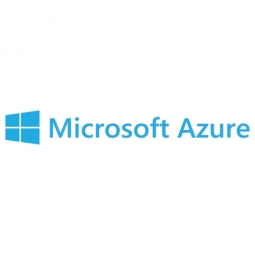Technology Category
- Analytics & Modeling - Real Time Analytics
- Platform as a Service (PaaS) - Application Development Platforms
Applicable Industries
- Equipment & Machinery
- Telecommunications
Use Cases
- Real-Time Location System (RTLS)
- Track & Trace of Assets
Services
- System Integration
About The Customer
AkzoNobel is a Dutch paint and coatings leader that operates in more than 100 countries. The company is known for its products such as Dulux and Polyfilla. It has a corporate size with over 10,000 employees. The company is headquartered in the Netherlands and has factories in various locations, including Como, Italy. AkzoNobel is committed to improving its processes and gaining more control over its operations. The company is also focused on digital transformation and is keen on harnessing digital technologies to reshape the way it operates globally.
The Challenge
AkzoNobel, a Dutch paint and coatings leader, was facing challenges in improving the performance and productivity of its factory in Como, Italy. The company was using traditional methods of monitoring the performance of the machines involved in creating the powder coatings, which involved manual data recording with pen and paper every 15 minutes. This method was not only time-consuming but also inefficient in providing real-time data. The company also faced resistance from its factory floor operators, especially the older ones, who were apprehensive about the introduction of new technology and the changes it would bring to their work methods. The company needed a solution that would not only improve its data collection and analysis but also be user-friendly for its operators of all ages.
The Solution
AkzoNobel implemented Azure IoT technology to digitally capture data in real time. The company introduced a Digital Performance Portal solution using Industrial IoT (IIoT) and Microsoft Azure. This solution was designed to be user-friendly, making it accessible to everyone, regardless of their level of technical expertise. The company also adopted a cloud-first strategy and chose Azure as its go-to platform. The IIoT solution on the Azure platform allowed the company to compare the performance of machines not just within a single factory, but also at different factories and sites around the world instantly. This provided the company with a complete picture of its operations, enabling it to identify areas for performance gains across multiple levels of the business. The company also plans to apply advanced analytics and artificial intelligence (AI) to harness its data globally in more advanced ways.
Operational Impact
Quantitative Benefit

Case Study missing?
Start adding your own!
Register with your work email and create a new case study profile for your business.
Related Case Studies.

Case Study
Smart Water Filtration Systems
Before working with Ayla Networks, Ozner was already using cloud connectivity to identify and solve water-filtration system malfunctions as well as to monitor filter cartridges for replacements.But, in June 2015, Ozner executives talked with Ayla about how the company might further improve its water systems with IoT technology. They liked what they heard from Ayla, but the executives needed to be sure that Ayla’s Agile IoT Platform provided the security and reliability Ozner required.

Case Study
IoT enabled Fleet Management with MindSphere
In view of growing competition, Gämmerler had a strong need to remain competitive via process optimization, reliability and gentle handling of printed products, even at highest press speeds. In addition, a digitalization initiative also included developing a key differentiation via data-driven services offers.

Case Study
Predictive Maintenance for Industrial Chillers
For global leaders in the industrial chiller manufacturing, reliability of the entire production process is of the utmost importance. Chillers are refrigeration systems that produce ice water to provide cooling for a process or industrial application. One of those leaders sought a way to respond to asset performance issues, even before they occur. The intelligence to guarantee maximum reliability of cooling devices is embedded (pre-alarming). A pre-alarming phase means that the cooling device still works, but symptoms may appear, telling manufacturers that a failure is likely to occur in the near future. Chillers who are not internet connected at that moment, provide little insight in this pre-alarming phase.

Case Study
Premium Appliance Producer Innovates with Internet of Everything
Sub-Zero faced the largest product launch in the company’s history:It wanted to launch 60 new products as scheduled while simultaneously opening a new “greenfield” production facility, yet still adhering to stringent quality requirements and manage issues from new supply-chain partners. A the same time, it wanted to increase staff productivity time and collaboration while reducing travel and costs.

Case Study
Integration of PLC with IoT for Bosch Rexroth
The application arises from the need to monitor and anticipate the problems of one or more machines managed by a PLC. These problems, often resulting from the accumulation over time of small discrepancies, require, when they occur, ex post technical operations maintenance.

Case Study
Data Gathering Solution for Joy Global
Joy Global's existing business processes required customers to work through an unstable legacy system to collect mass volumes of data. With inadequate processes and tools, field level analytics were not sufficient to properly inform business decisions.







